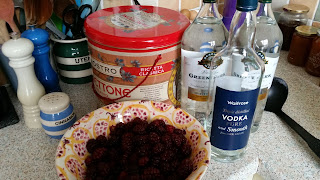In 'The Battle of the Villa Fiorita' though there is something of old values and new freedoms. Fanny Clavering (unfortunate name) has been divorced by her husband Darrell after committing adultery with a film director. The pair have left for Italy to rest, ride out the consequences, and wait until they can be married, but Fanny's children have different ideas. They want their mother back and are determined to do whatever it takes to achieve that


In this case that means 14 year old Hugh and 11 year old Caddie sneaking out of London and crossing Europe to turn up unannounced and unwelcome at the Villa Fiorita. They can do this so easily because as any upper middle class child of the time would have been, they're both at boarding school. It's the start of term, and simple enough to telegraph an excuse. Darrell is a queen's messenger so often called away (this is a remarkably useful plot device) and with the break up of home and routine there's nobody to pay much attention to Hugh and Caddie.
In her preface Godden says she's sick of stories about how divorce damages children, she wanted to write about children who choose to fight back. In the process she examines the repercussions of this and perhaps explores some of her own guilt around her divorce (she doesn't say that in the preface, but it's reasonable to assume that's what's happening here).
By 1963 I'm guessing divorce would have lost some of its stigma, though for a woman abandoning her children, as Fanny has, there would be an entirely different level of condemnation. The question is, how much does she deserve it?
The first thing that struck me is how much kinder divorce is to children now. For these children, shunted away to school, there's no hint of what's coming until the smash is complete - not just an absent mother but also the sale of the family home and for the younger ones precious little explanation. The second thing is how spectacularly selfish Fanny and Rob are.
The Clavering's marriage has been outwardly successful. A nice old family house in the country, a round of dinner parties, school runs, apple jelly in the autumn, all the conventional things. Until Rob comes along it seems Fanny isn't even aware that it's not particularly fulfilling. When he does the depth of the attraction between them is clearly enough for her to feel the world is well lost for love, and so she gives into it and allows herself to be swept off to Italy to live in a cocoon of passion and self indulgence.
I don't have much sympathy for Fanny, it's not that she's left her family that bothers me, but that she's done it with so little care or thought. Does she deserve a happy fulfilling relationship - of course she does, but for it to work she would need to be far more honest with herself than she appears to be. If Rob and Fanny's relationship can't survive the presence of their respective children then what's it worth?
Godden excels at this kind of thing - at showing how seemingly small things can matter so much, especially to children, at exposing the selfishness of lovers, and understanding all the things that prick the conscience. The power of the book is in the banality of the situation underneath it's glamorous setting and the absolute authenticity of her protagonists behaviour.
The first thing that struck me is how much kinder divorce is to children now. For these children, shunted away to school, there's no hint of what's coming until the smash is complete - not just an absent mother but also the sale of the family home and for the younger ones precious little explanation. The second thing is how spectacularly selfish Fanny and Rob are.
The Clavering's marriage has been outwardly successful. A nice old family house in the country, a round of dinner parties, school runs, apple jelly in the autumn, all the conventional things. Until Rob comes along it seems Fanny isn't even aware that it's not particularly fulfilling. When he does the depth of the attraction between them is clearly enough for her to feel the world is well lost for love, and so she gives into it and allows herself to be swept off to Italy to live in a cocoon of passion and self indulgence.
I don't have much sympathy for Fanny, it's not that she's left her family that bothers me, but that she's done it with so little care or thought. Does she deserve a happy fulfilling relationship - of course she does, but for it to work she would need to be far more honest with herself than she appears to be. If Rob and Fanny's relationship can't survive the presence of their respective children then what's it worth?
Godden excels at this kind of thing - at showing how seemingly small things can matter so much, especially to children, at exposing the selfishness of lovers, and understanding all the things that prick the conscience. The power of the book is in the banality of the situation underneath it's glamorous setting and the absolute authenticity of her protagonists behaviour.











